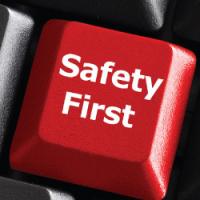- Posts: 350
- Thank you received: 11
Setting The Example
- Safety Toolbox Talk Webmaster
-
 Topic Author
Topic Author - Offline
- Administrator
-

Setting a good example is not a "put-on". It's simply working safety into your daily routine at home and on the job. When we all work safely, everyone's job is safe and their future more secure.
New employees certainly benefit by seeing operations conducted the safe way. As you all know from experience,people new on the job take a while to adjust and to discover who they are in the overall set-up of the plant. New employees who have never held a job before or were employed by a firm that had a weak safety program probably will need considerable safety instruction. We'll attempt to give it to them, but naturally, they also observe and seek advice and information from fellow workers. These early impressions of you and of safety operations will be at least partially formed through these contacts and observations.
On the other hand, newcomers formerly employed by a firm that emphasized safety will probably think more of you personally if you measure up to the caliber of people they are accustomed to working with.
"Don't do as I do; do as I say" is a pretty tired expression, and it got tired because we all have repeated it many times not just verbally but through our actions; and actions speak louder than words. When we leave our safety glasses resting on our foreheads rather than in place over our eyes, or when we kick an empty milk carton under a bench rather than pick it up, we're selling safety but it's a useless soft sell. Our actions are saying, "I believe in wearing eye protection but not in protecting my eyes; and I know trash can cause a tripping accident, but it isn't important enough to make me pick it up."
There's another angle to setting good examples. Too often people dress to impress others with their good taste rather than their knowledge of safety. Wearing rings, bracelets, and other ornaments is dangerous around machinery and in many other jobs where it's possible for jewelry to be caught by moving parts of machinery, thus cause injury to the wearer. Long sleeves, floppy pant legs, and long hair can be hazardous on some jobs, too.
So we should always dress for the job. Our image as a fashion expert may suffer, but it will give way to the more important and more beneficial image of safety.
Maybe some of us feel we are already setting good examples for safety, but maybe this self-image isn't too accurate. Think just for a momentisn't it strange that we always think about having the nice things happen to us and when we think about an accident, it's usually happening to someone else?
Accidents are a reality. Make your personal safety just as real and you'll have a good chance of not becoming the other person to whom accidents are always happening.
We also might remember that our children some day will be entering the work force. And they, like the newcomer on the job, can benefit by our actions that exemplify safety consciousness.
Most of us try to demonstrate to our kids how to cross streets or how to light matches when they're of age. If, through the years, your kids learn from you how to use a ladder correctly, or that it's good practice to keep tools in their proper places or that there's a right way to lift things, you've given them an additional opportunity for the better life the future promises.
Please Log in or Create an account to join the conversation.
